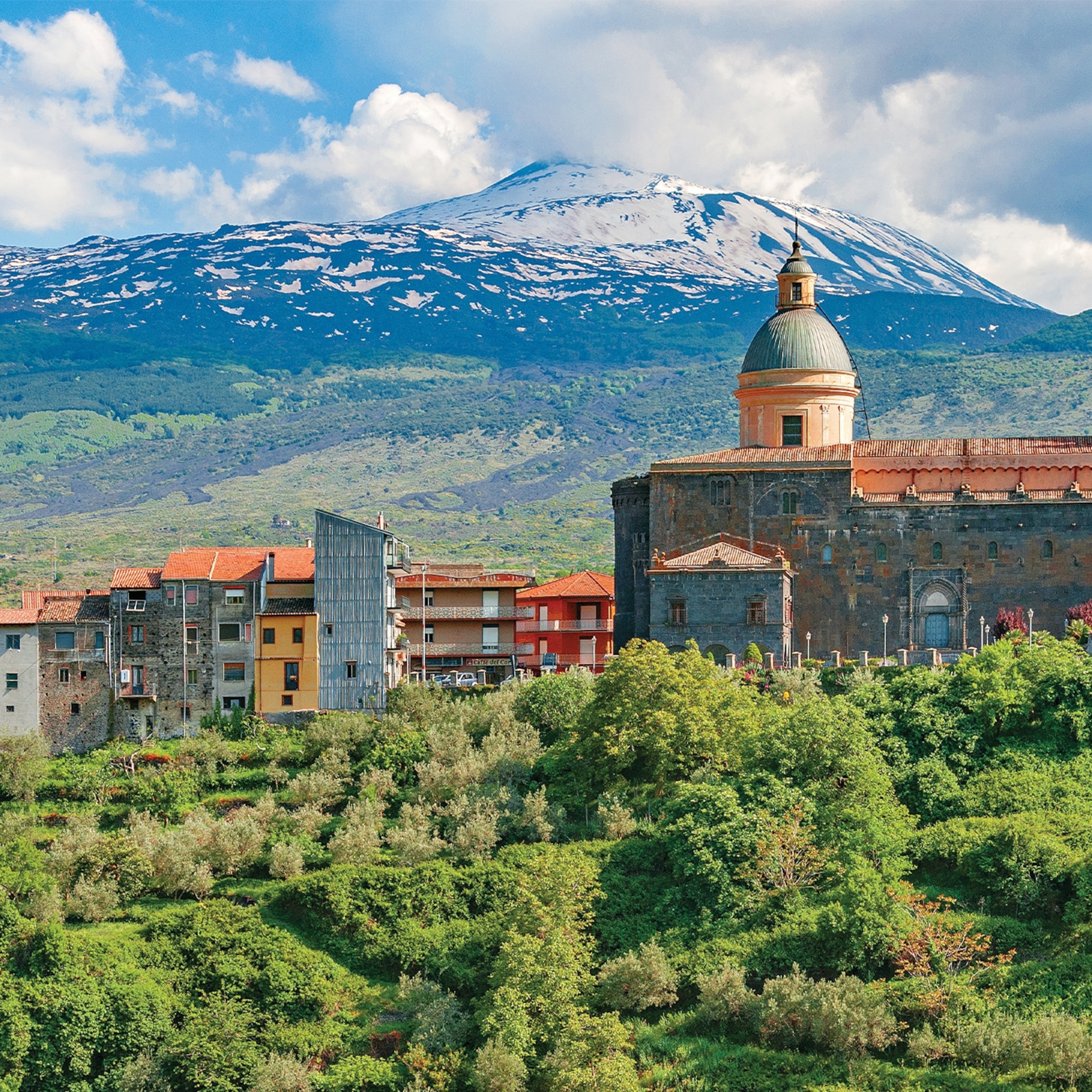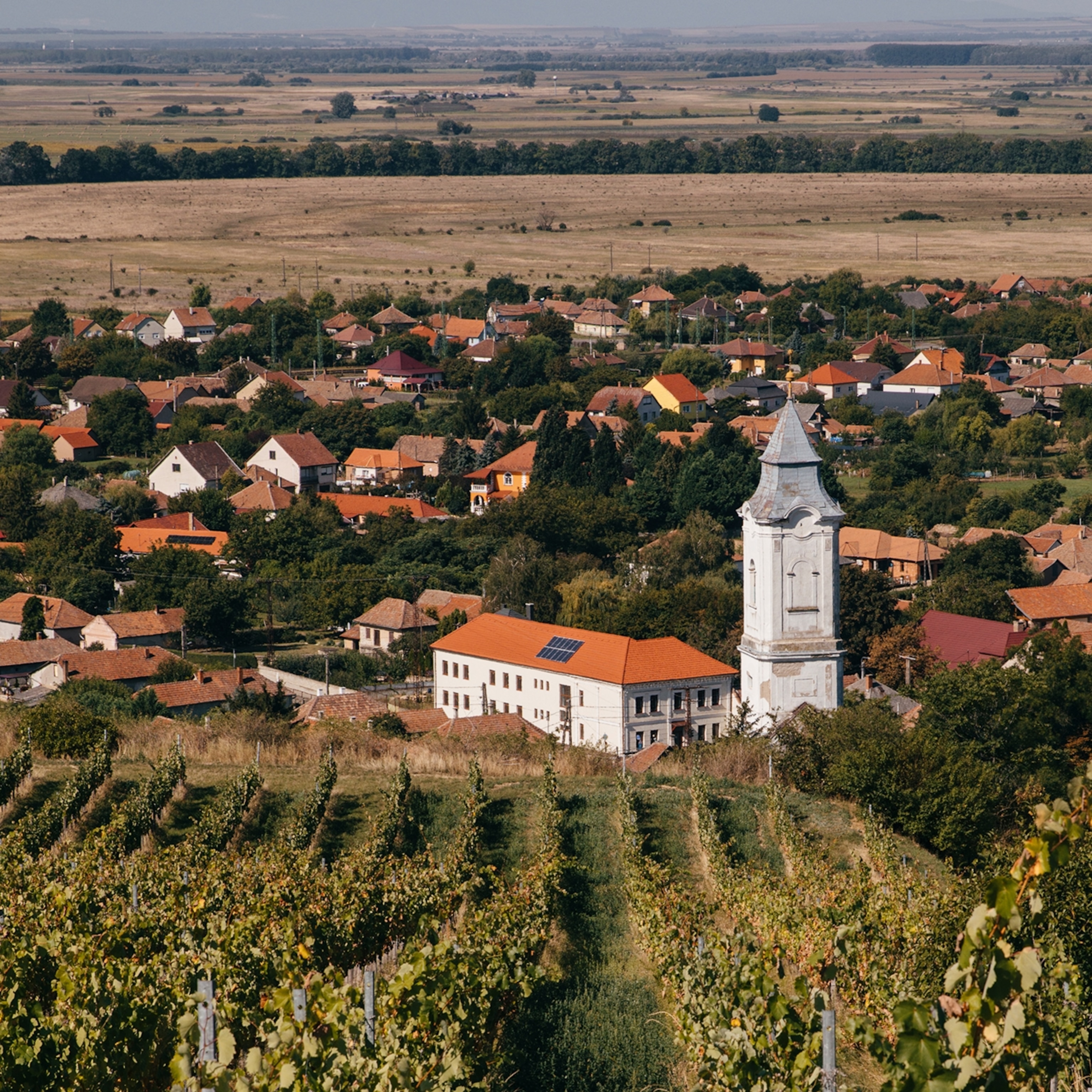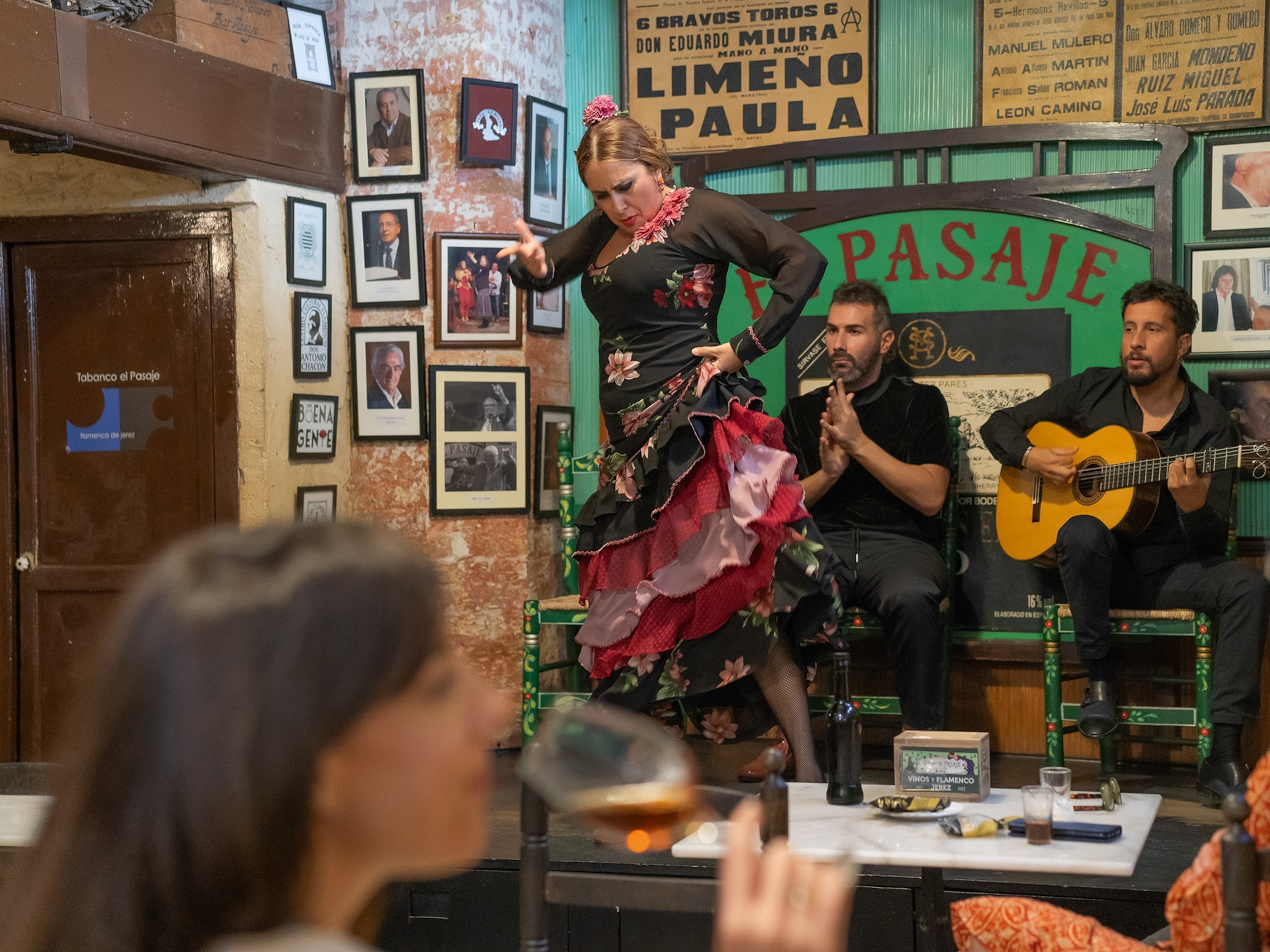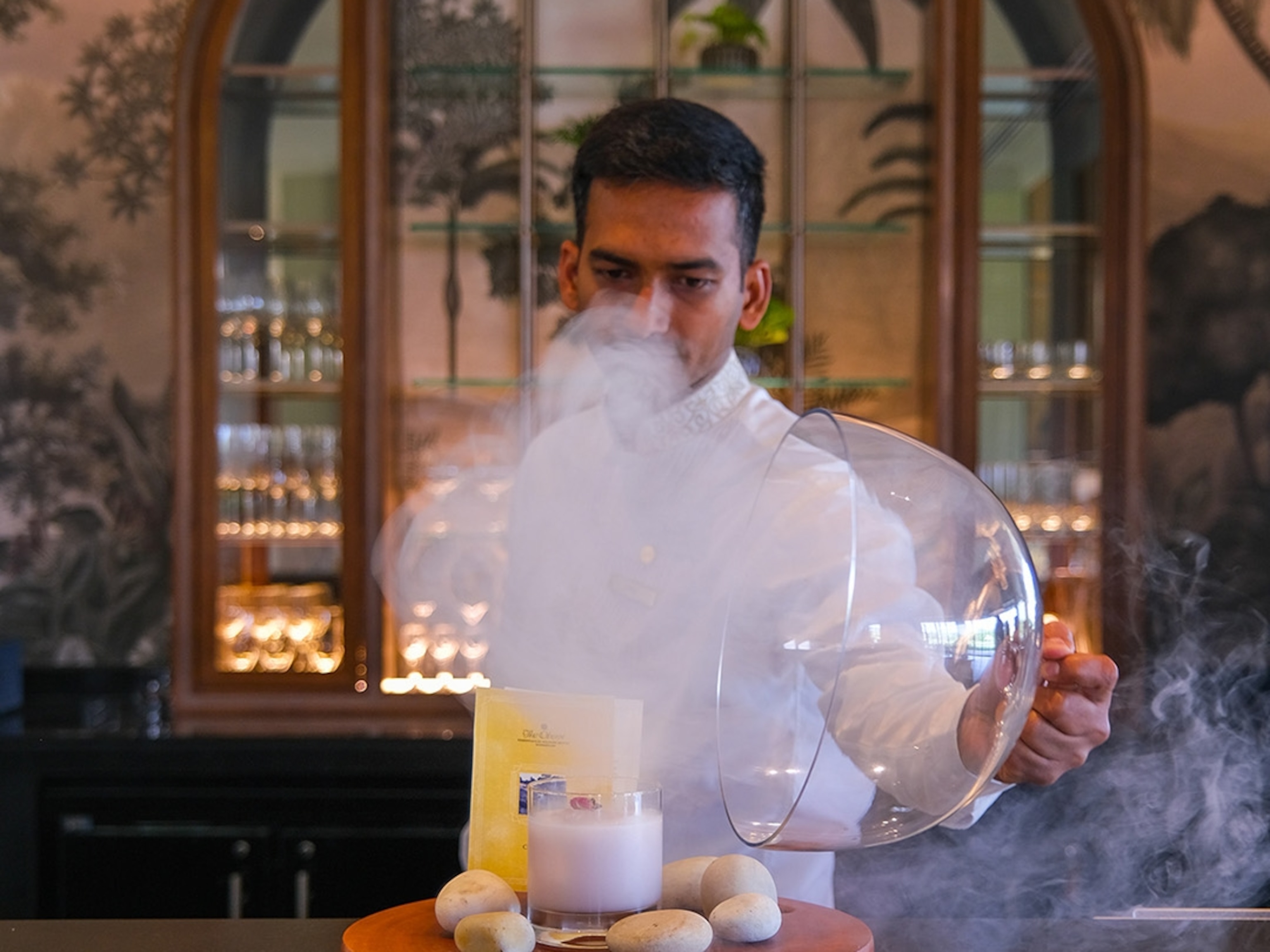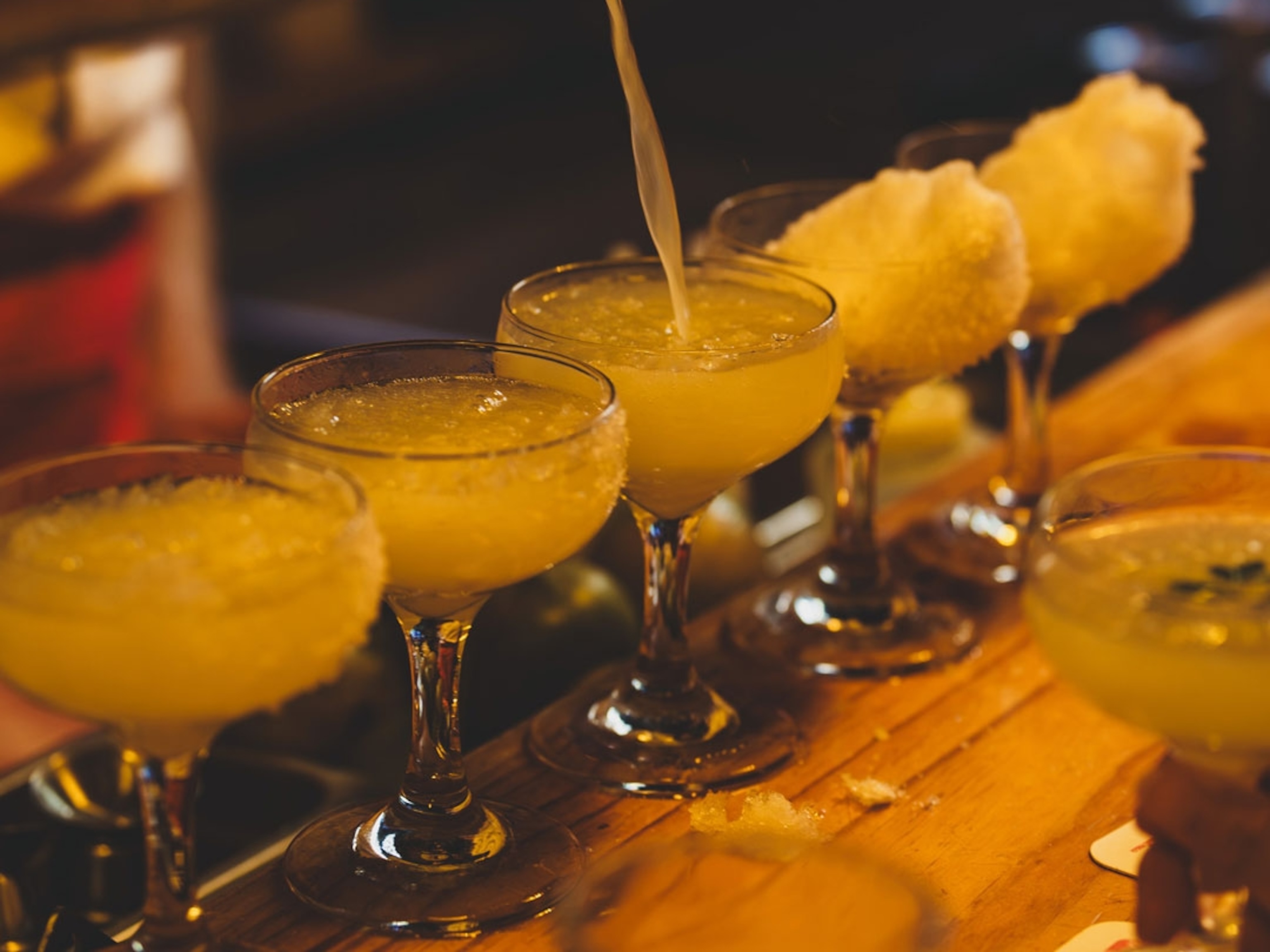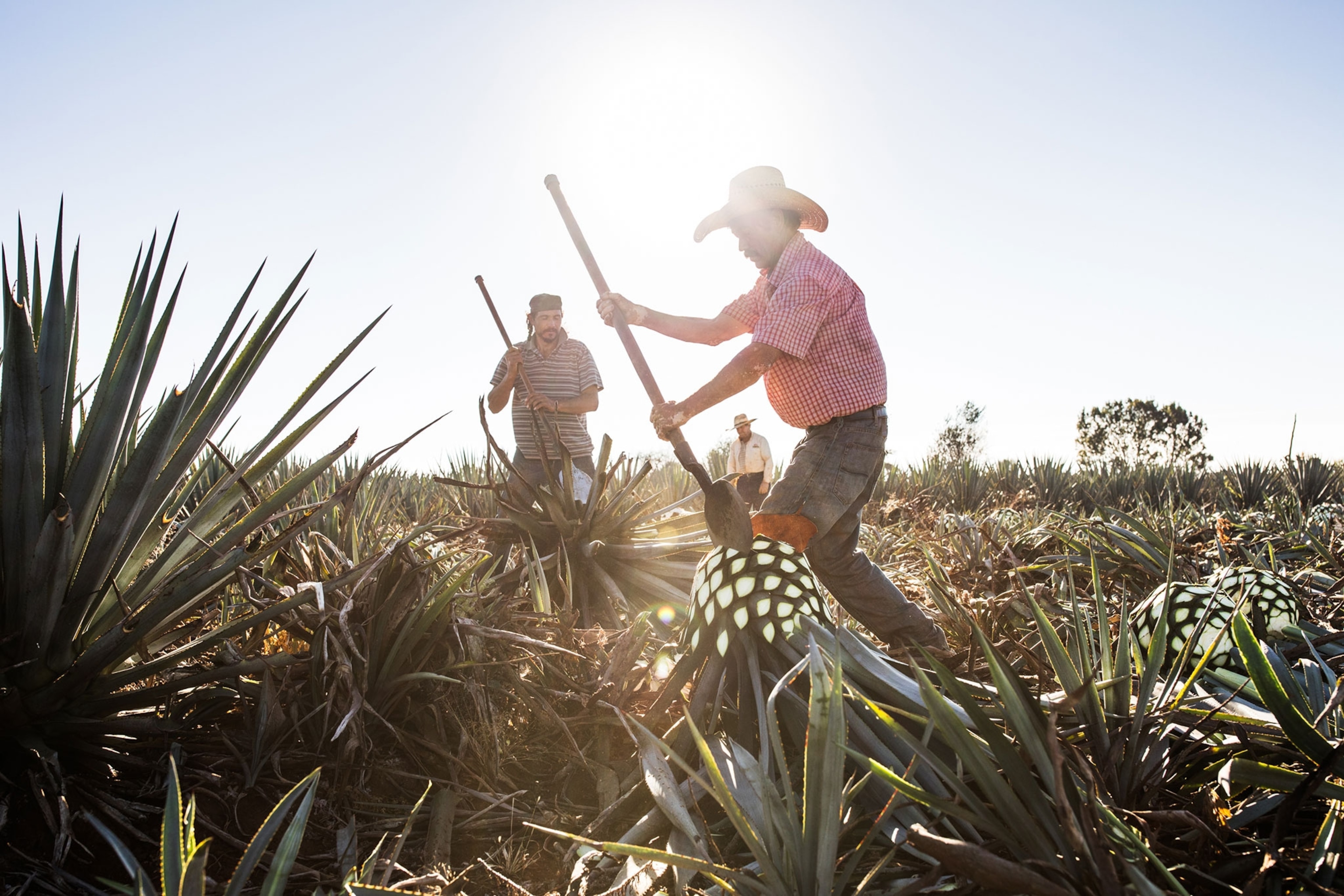
Tequila Rocks
When George Clooney and Rande Gerber’s tequila company, Casamigos, sold for $1 billion last year, it begged the question: How did the once-humble swill become so swank? A trek through Mexico distills all.
“ONCE UPON A TIME in Guadalajara, there lived two competing tequila-making families, Sauza and Cuervo,” read a March 1967 National Geographic story. “They had always quarreled and for a generation they had exchanged both insults and pistol shots. Sauza children never met Cuervo children in Guadalajara. But then young Javier Sauza went to a small university in Chicago...”
There, the third-generation heir to the Sauza tequila dynasty met and secretly married a beautiful, red-haired Cuervo relative. This so enraged Javier’s father—who, according to folklore, shot a Cuervo dead in the 1900s in the streets of Tequila, the town about 40 miles northwest of Guadalajara that gave the spirit its name—that he banned his son from the family business, leaving the him to toil as a Mexico City tour guide and sustain a string of odd jobs before being allowed back into the company shortly before his father’s death in 1946.
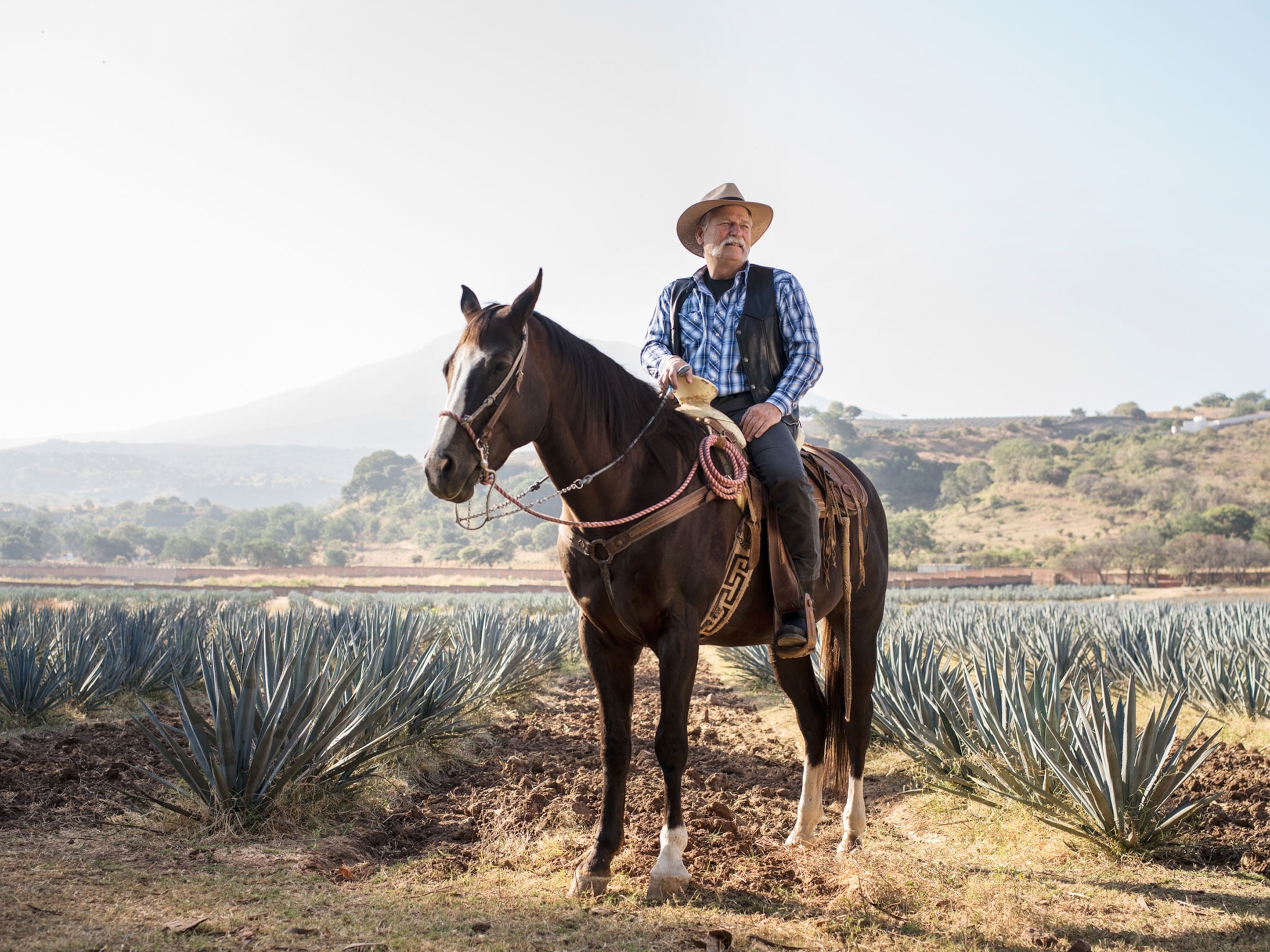
Javier elevated tequila’s image, creating upscale brands such as Tres Generaciones, to honor his Sauza forebears, and fighting off imitators, most vehemently the Japanese. Then in 1976 Javier did the unthinkable: He sold the family tequila company—at precisely the wrong time. The peso devaluation gutted his profits. Worse, the Sauza brand was sent spiraling through increasingly foreign hands and is now owned by... Beam Suntory, a Japanese-owned conglomerate.
“I am sure my grandfather regretted selling the company that had been in our family three generations,” says Guillermo Sauza, a fifth-generation member of the pioneering tequila clan. For 20 years, Guillermo, now 65, was a Sauza without a tequila to call his own. In 1999, he took over the last family-owned distillery, which had been shuttered since 1968. His grandfather also left behind the distillery’s name—Fortaleza, meaning Fortitude. It now adorns the label of his grandson’s small-batch brand, sold and acclaimed world-wide, and seems to be an apt description for what it takes to survive, much less thrive, in the spirit industry’s most overheated field.
Standing on Calle José Cuervo, in the center of the gold-rush city of Tequila, Mexico (pop. 40,000), I’ve spent the day and most of the night tasting tequila at distilleries. And the hallucinatory spirit that has made a fool of many a mortal is making a monkey of me. My head is swimming. Not from the alcohol, but the acrimony. I have listened to tortured tales of family feuds and corporate lawsuits, of trade secret banditos and tequila larceny. I’ve heard whispers from representatives of one brand and curt denials from the other—or cold refusals to respond.

“Be very skeptical of the Kool-Aid they’re pouring,” one tequila aficionado said of one brand. “That’s history that brings back bad memories,” said a second. “The story of tequila involves generations of Mexican families and there are some stories not able to be spoken openly about, much less printed,” added a third.
There’s so much turmoil in Tequila that I need another drink—which one can find on every corner. Here, the air is perpetually smoky sweet with the scent of tequila being made, poured and consumed. Almost every building’s outer wall advertises a brand and every lane holds a distillery, tequila shop, stand, statue or bar. Two museums tell the spirit’s tumultuous story back to when it was called Mexican Whisky Brandy.
Tequila was born in fire, according to legend. Its birthplace is right outside of town, 9,580 feet atop Volcán de Tequila, where a spiky blue agave, the cactus plant from which tequila is made, supposedly exploded after being struck by lightning, and the Nahua tribe tasted the plant’s sweet nectar, which, both holy and blessed by Mayahuel, goddess of agave, became the spirit that would intoxicate the world: tequila.
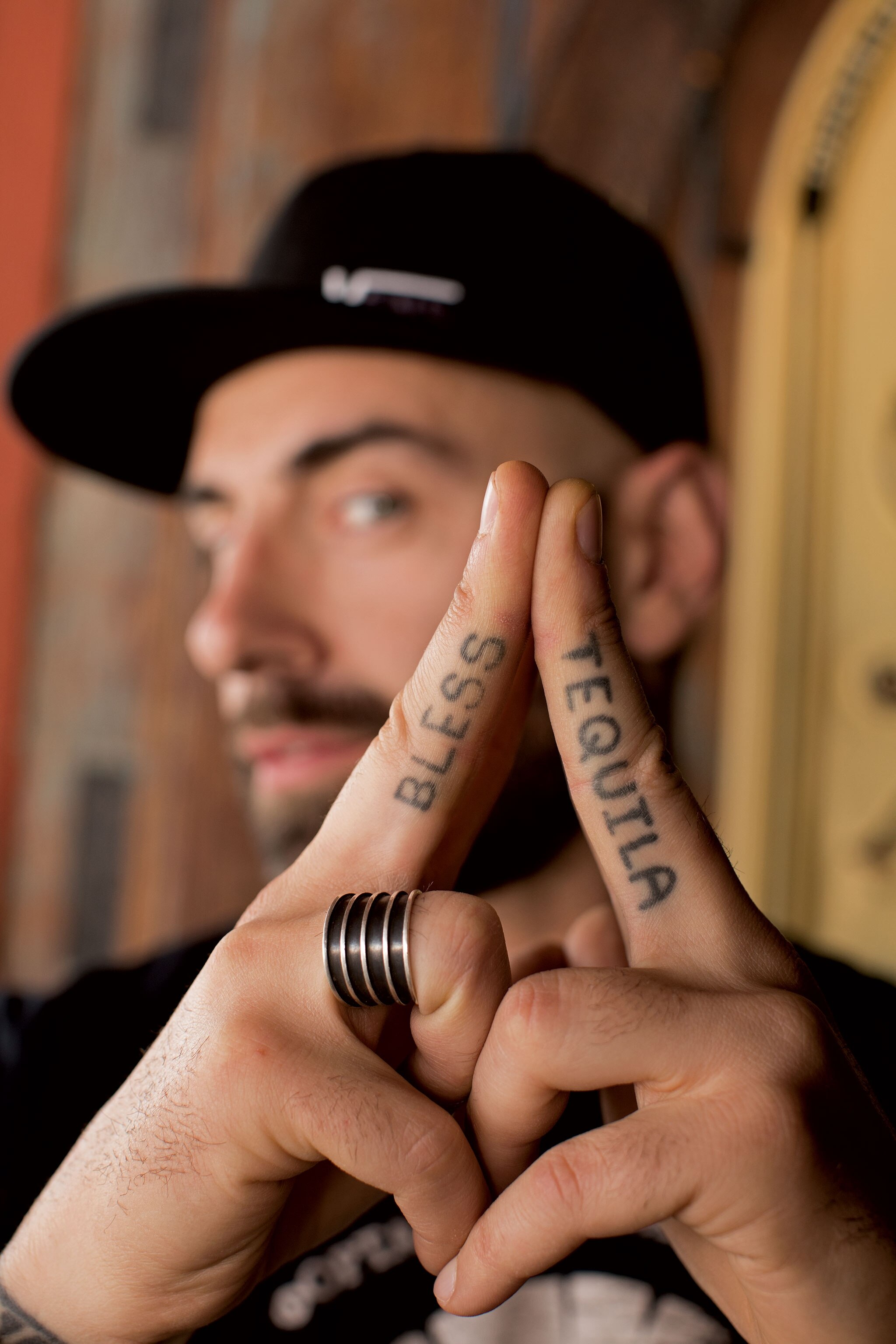
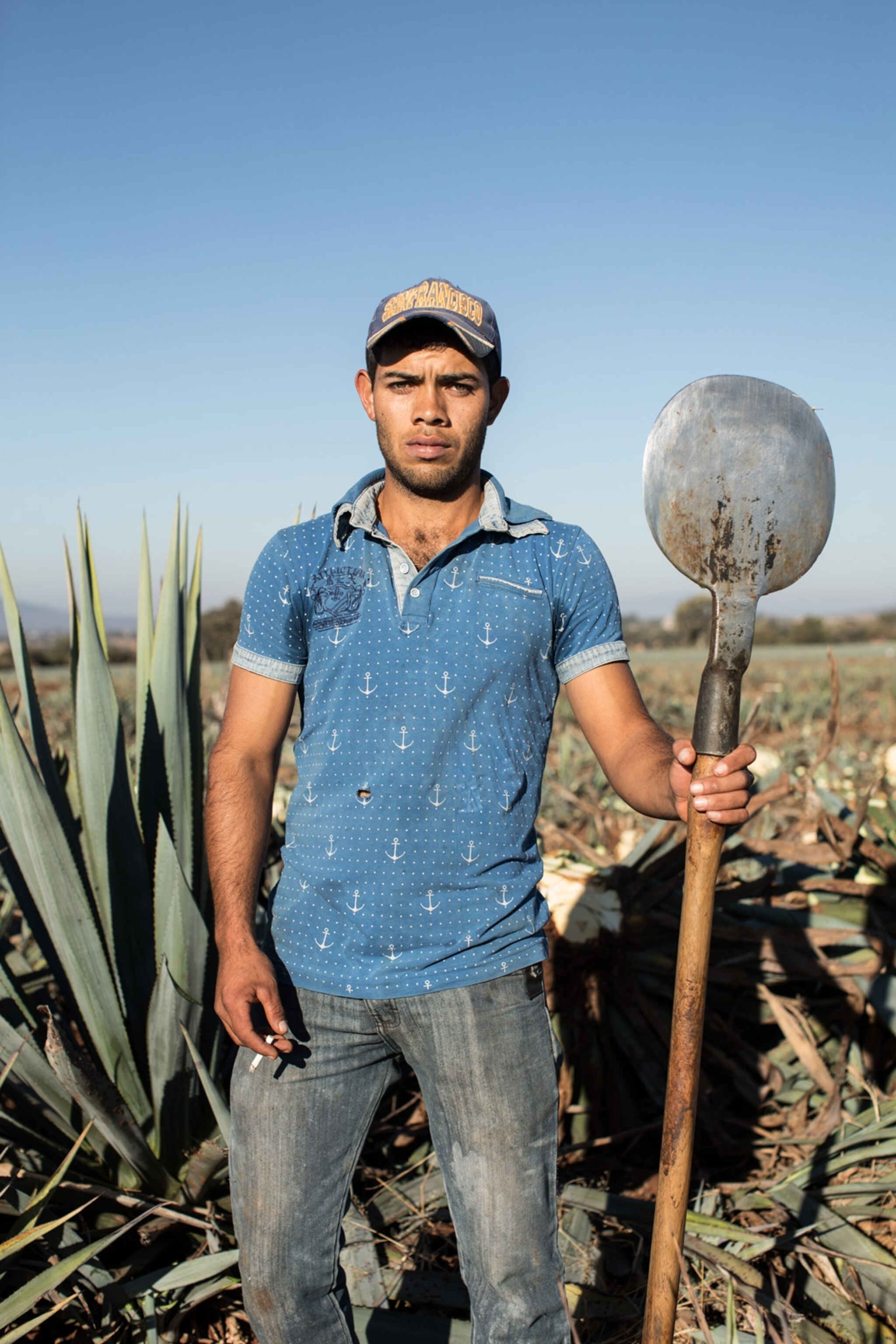
Centuries later, tequila has exploded again, in a gusher that has turned unlikely gringo wildcatters into tequila billionaires. Last June, the British spirits conglomerate Diageo paid $1 billion for Casamigos, the five-year-old tequila company co-founded by actor George Clooney and model-turned-entrepreneur Rande Gerber, husband of supermodel Cindy Crawford. In January, Bacardi astounded the industry by acquiring, in a deal valued at $5 billion, the tequila giant, Patrón, founded on a shoe-string in 1989 by California-based home-furnishings importer Martin Crowley and his partner John Paul DeJoria, billionaire co-founder of the Paul Mitchell Systems hair-care company.
These buyouts are merely part of tequila’s raging bull market, whose players include most of the major international wine and spirits conglomerates, and are powered by international tequila connoisseurs willing to pay $7,500 for Patrón in a Lalique crystal decanter, to $30,000 for the 15th anniversary bottle of Clase Azul, its bottle studded in 24-karat gold. Once the rotgut demon choice of hungover spring-breakers and hell-raisers, tequila has been elevated to, as the Mexican Chamber of the Tequila Industry literature trumpets about its annual festival, “Regalo de México para el mundo,” Mexico’s gift to the world.
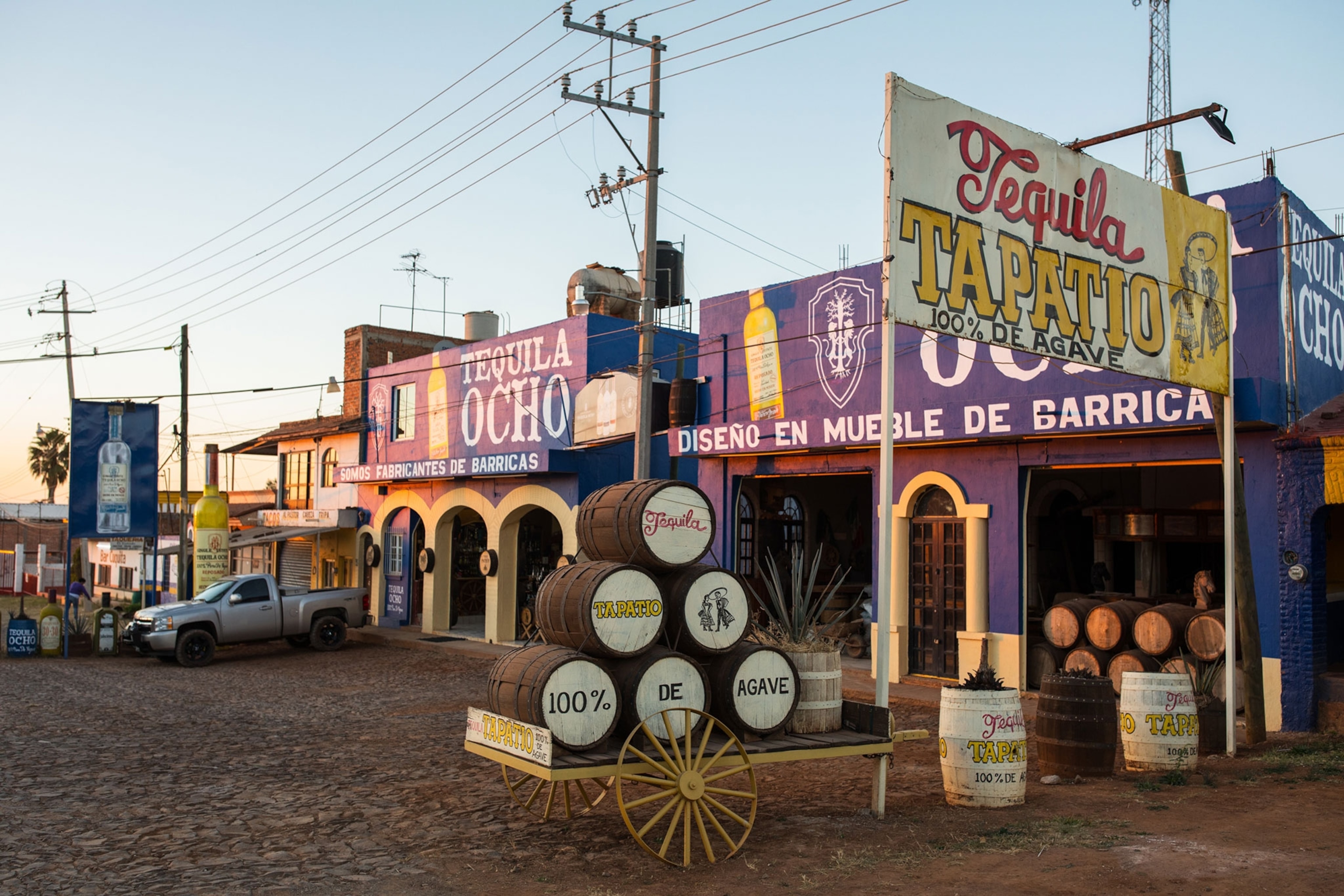

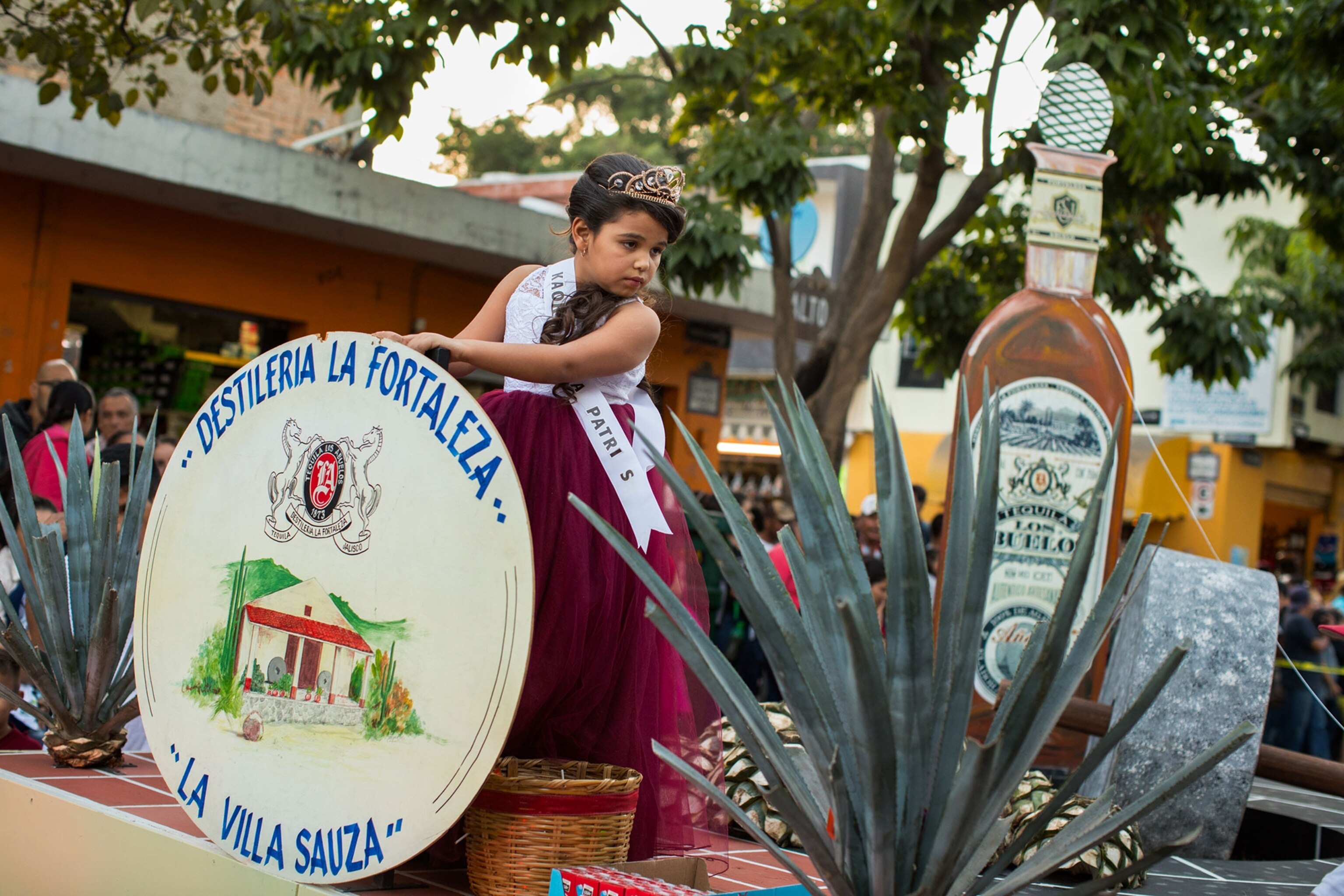
IT ALL BEGAN in this tiny town, whose landscapes and ancient industrial facilities were declared a UNESCO World Heritage site in 2006. For centuries there was an imagined wall in the world of Tequila. It separated Mexico from the U.S., tequila from what would become its biggest marketplace. Today, tequila is booming in America, where about 80 percent of the world’s production is sold. Tequileros(tequila makers) had long tried to break through this wall, beginning with Don Cenobio Sauza, the first to bring tequila to America by horseback, after founding the Sauza distillery in 1873. Tequila began to take off when the margarita became popular in the 1960s. Next, the tequila-shooting rock bands, most notably the Rolling Stones on their 1972 tour, pushed U.S. tequila sales up 300 percent, according to a 1976 Rolling Stone story. But this was such poor-quality tequila that by the 1980s, tequila makers were mostly met with disdain. “Nobody wanted to hear about tequila,” says master distiller Carlos Camarena, whose family has been growing agave since 1888. “Everybody remembered coming to Mexico on spring break, drinking tequila and having a big hangover.”
We are touring Camarena’s distillery in the Highlands of Jalisco, the new tequila frontier three hours east of Tequila town. Fields of blue agave fill the horizon and the nearby properties are occupied by the industry’s giants such as Don Julio, as well as proud concerns that cling to their rich heritage, including Camarena, whose various brands include Tequila Ocho. Created in conjunction with foremost tequila emissary Tomas Estes, Ocho is an artisanal tequila: each vintage produced from a single agave field with its own distinctive terroir, like wine.
Camarena is a true tequila pioneer. In 1983, “the original importers,” Robert Denton and Marilyn Smith, began bringing the first 100 percent agave boutique tequilas—Chinaco and Caliente—to the U.S. By 1988, they were importing Camarena’s El Tesoro brand, and he helped them with promotion, striving to break the wall between Mexico and America. It was a start, and 100 percent agave tequila began to sell in America. But despite his family’s six generations in the tequila trenches, it wouldn’t only be Camarena who would be a beneficiary of tequila’s current global bounty. And it wouldn’t only be Cuervo or Sauza, whose volume exceeds all other brands, that would reap the financial bonanza. The fortune would be seized by of all people...a gringo.

TO HEAR THE STORY of that, I drive an hour and a half out of Guadalajara, through the flat landscape of Jalisco, to the town of Atotonilco el Alto. A long lane leads to an extravagantly columned hacienda on 222 acres, its various wings serving as a distillery, grand marketing show- case and private guesthouse. I have arrived at Hacienda Patrón, where invited guests—distributors, opinion leaders, media, bartenders—enjoy complimentary overnight stays in 20 suites while being entertained and educated about Patrón. On its landscaped grounds stand three life-sized bronze statues: Patrón’s co-founder John Paul DeJoria, its CEO, Ed Brown, and its revered master distiller, Francisco Alcaraz. To meet Alcaraz is to watch the statue step down from its pedestal and tell you a story, which, Alcaraz says, began with a stranger standing in front of Siete Leguas distillery, a short drive from Hacienda Patrón.
His name was Martin Crowley and, according to Alcaraz, “He asked, ‘Can you help me?’” Crowley had been trying to meet the González de Anda family of the Siete Leguas tequila company in Los Altos. “But they don’t pay me any attention,” Alcaraz recalls the gringo saying.
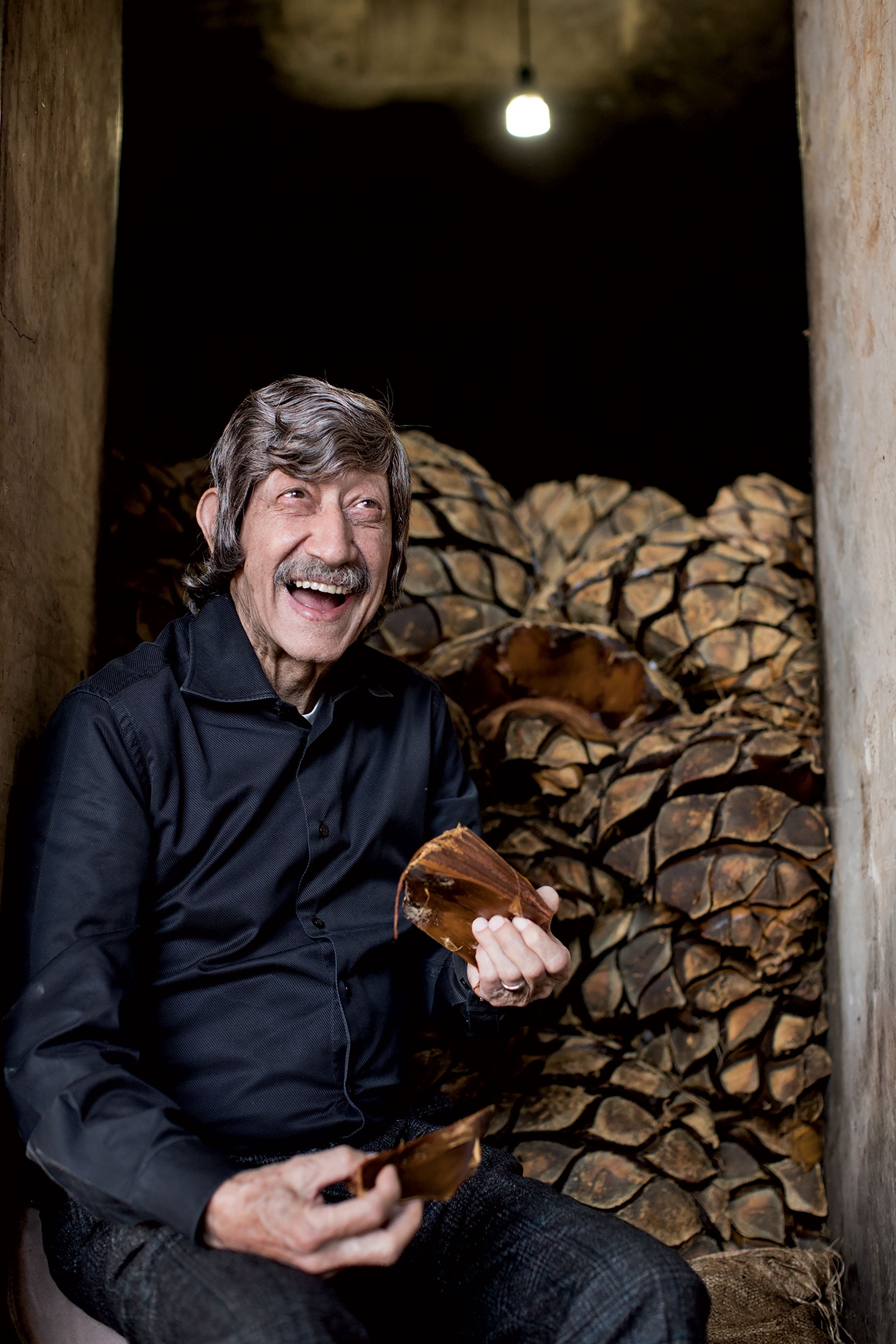
Named for Mexican revolutionary Pancho Villa’s horse, which rode seven leagues, or siete leguas, in one day between Mexican towns, the brand was, then and now, owned by seven González family members who honor the tradition set forth by their father in 1952. Today, their tequila is sold throughout Mexico and the U.S., soon to be in the European Union and U.K. But in 1987, its sales were limited to Mexico. “Like most people in the industry back then, they were making tequila for the Mexican market; the U.S. market wasn’t quite ready for a super- premium brand” says their U.S. representative David Grapshi.
ALCARAZ HAD BEGUN his career in the distilleries at 21. Educated as a chemical engineer, he served two years as a government tequila inspector. When he met Crowley in 1989, Alcaraz was a consultant, working in production for the González family, and he didn’t recognize Crowley as anything but a stranger. He didn’t know that while Crowley visited Mexico regularly on buying trips for his home furnishings company, his obsession was the newfangled 100 percent agave tequila called Chinaco, when imported tequila was mostly mixto—agave mixed with up to 49 percent of sugars from another source. Crowley and his friend DeJoria “began speculating about which tequila the aristocrats of Mexico drank,” wrote Ilana Edelstein, Crowley’s longtime partner, in her book The Patrón Way. It was a question Crowley had been trying to answer by tasting tequilas, which was why he was standing out- side Siete Leguas, whose tequila he had deemed perfection.
Alcaraz went to Siete Leguas family member Lucretia González and told her of the American. She said she knew of him and just like that Crowley was inside. He soon struck a deal for the company to produce tequila for him through the auspices of Francisco Alcaraz.

Alcaraz stresses that he “created the process and blend different from Siete Leguas” for Martin Crowley and Patrón. And while he says “the two have always been separate and different tequilas,” Siete Leguas still promotes Patrón in its marketing materials as its own: “Today Siete Leguas can correctly claim that it was the original formula for Patrón from 1990 to 2002....” (The González family declined to comment on this and any other aspects of their relationship with Crowley or Patrón.)
But what propelled the brand wasn’t made in Mexico; it was 100 percent American: the marketing. Back home in California, Crowley and DeJoria went forth, two tequila Johnny Appleseeds. DeJoria was introducing it in his celebrity circles, while Crowley would carry Patrón wherever he went, setting it on a bar in front of a restaurant or bar owner and insisting they do a comparative taste test until he got the inevitable answer, which, Edelstein wrote, was always, “Wow.” In their wake came the Patrón Girls, advertising the brand, beginning in 1990 at the company’s first booth at the Wine and Spirits Wholesalers of America Convention in Las Vegas. By day two, “the crowd grew so big it blocked the entrance to the convention. ... Patrón had stolen the entire show,” wrote Edelstein.
“It took off like a rocket,” says Alcaraz. “And it hasn’t stopped since.” Today, Patron sells 3.2 million cases each year, making it America’s best-selling ultra-premium tequila. Two breakups didn’t stop the momentum: First with Seagram’s, with which the brand had entered into a distribution deal, as well as an agreement to build a distillery together, which later collapsed and ended in lawsuit; then Siete Leguas, in whose distillery Patrón was produced until shortly before Crowley’s death in 2003. “For reasons of their own, they broke relations with us,” says Edelstein.
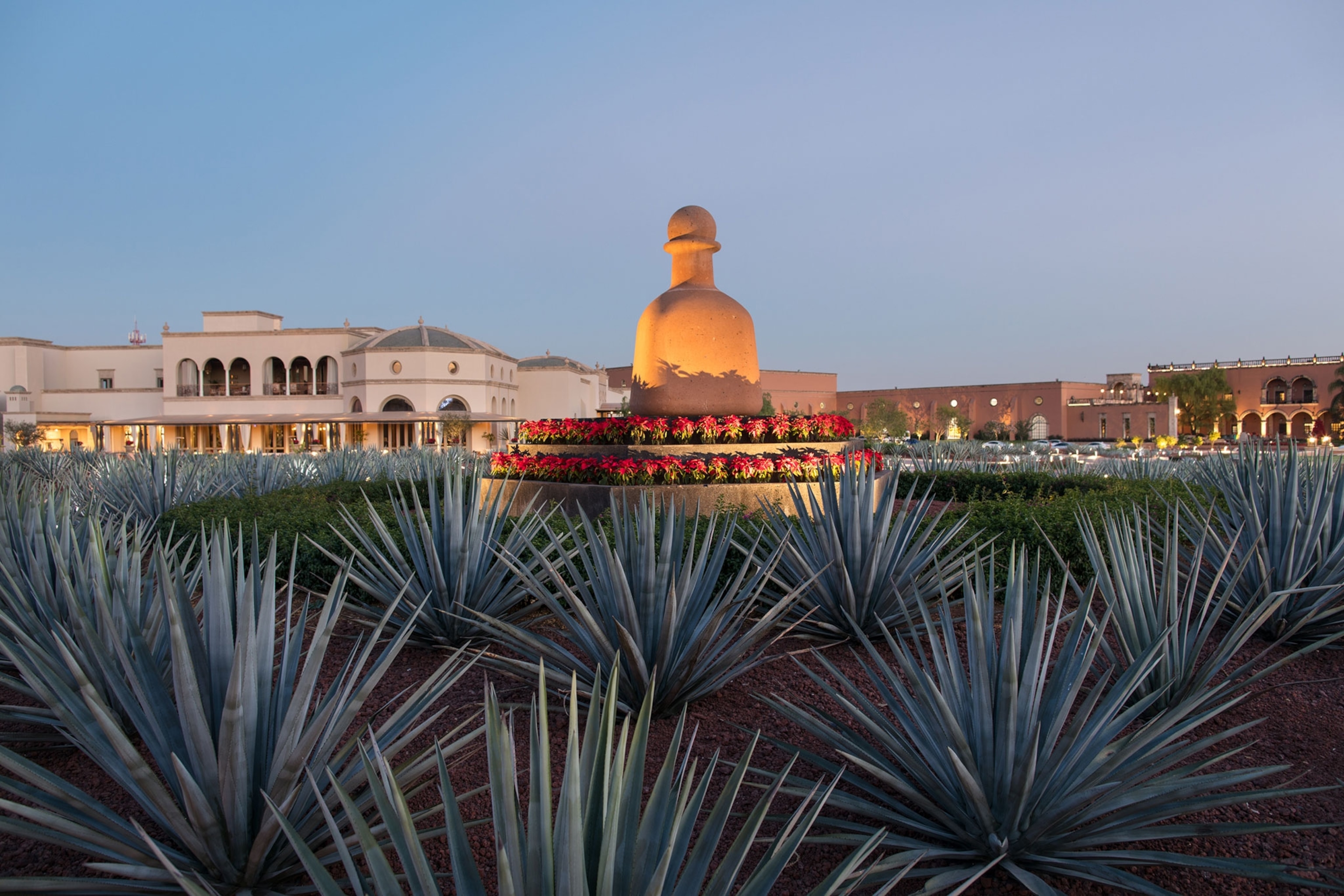
The stunning success of Patrón inspired “copycats,” says Grover Sanschagrin, a former photojournalist who arrived in tequila country in 2010 with his wife, Scarlet. They spent two years studying the industry and returned to San Francisco to develop an app that would open a curtain on tequila. It’s called Tequila Matchmaker. Designed to match drinkers with the tequilas most right for them, the app also enables users to type in a tequila brand and discover its distillery—with surprising results: Patrón ushered in the world of “contract brands,” in which “tequila producers leave the production of their tequila to someone else,” says Sanschagrin. “Someone who doesn’t even know how to make tequila will come down to Jalisco and say, ‘I have the brand name, bottle design and logo. Put your tequila in my bottle and send it to me to sell as my own.’ Patrón was the original contract brand.
Interesting enough, Patrón got so successful they built their own distillery. ”But,” Sanschagrin continues, “they inspired everyone to be the next Patrón. Distilleries were set up to sup- port and supply the demand for those wanting to be the next big thing. The largest contract distillery produces 80 different brands, which usually means all of their tequilas are pretty sim- ilar, except for the price point.” While some tequilas made at shared distilleries are only housed at the contract distillery and have their own master distiller, special formula, sourced agave, proprietary yeast, independent equipment and distinctive flavor profile, others are merely “using a stock, or house recipe, that is the same as other brands they produce and it’s all about marketing and branding and logos,” says Sanschagrin.
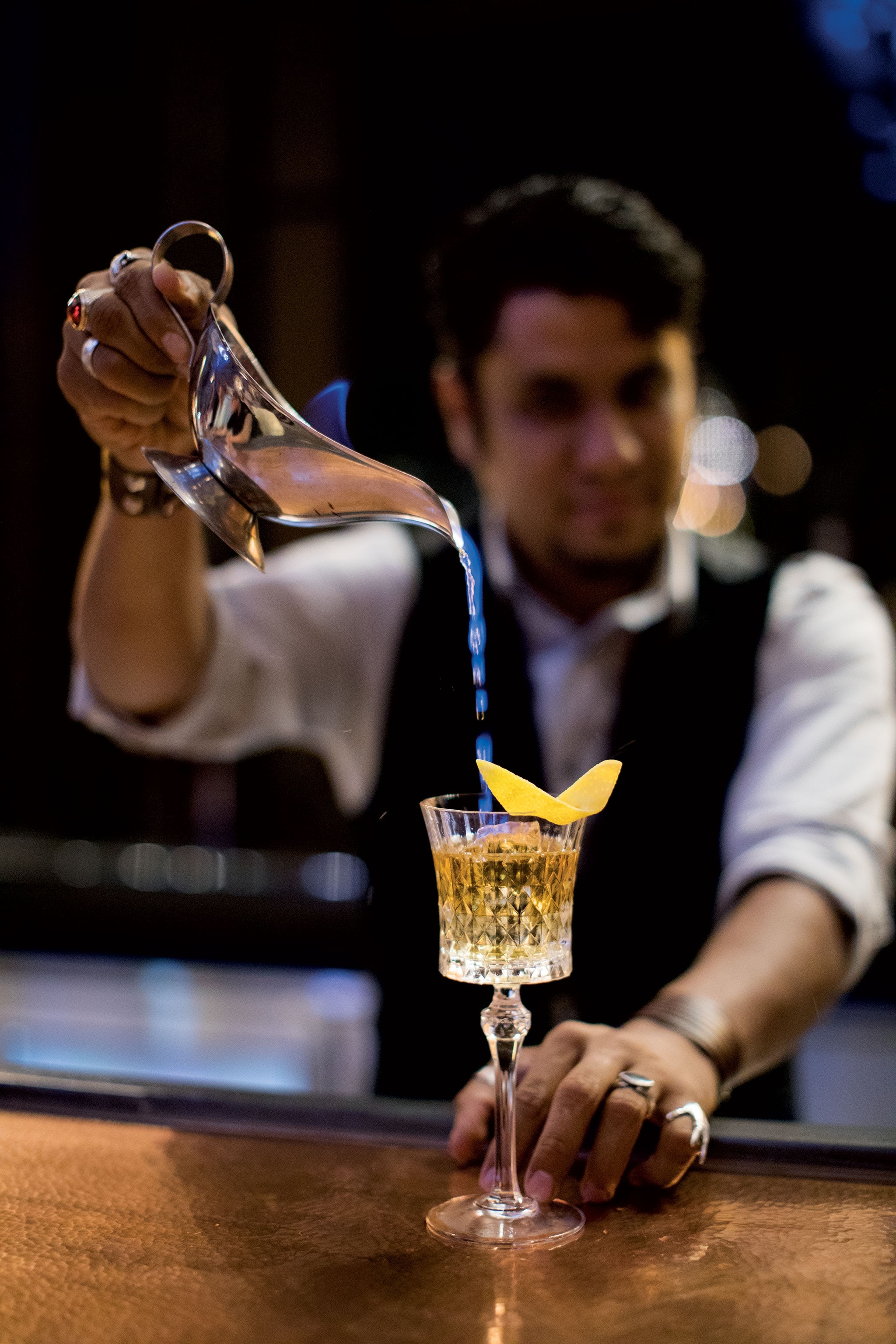
Only 13 distilleries are currently dedicated to producing a single brand, says Sanschagrin. “There are 1,200 tequilas in the market being produced at distilleries that make product for more than one brand, which is roughly 98 percent of the market.” He says the 1,200 contract brands include leaders in the ultra-premium field: Clase Azul, Casa Dragones, Avión, Casa Noble, and tequila’s mega-success story, Casamigos.
THE STORY OF CASAMIGOS is best told not in Mexico, but in the brand’s headquarters in Malibu, California, a sunny, second-floor office suite a block from the Pacific. Nine blue Casamigos surfboards fan out on a wall, a metaphor for the company that made George Clooney and Rande Gerber even wealthier, surfing on a sea of tequila. Their tequila adventure began in Cabo San Lucas, where then-single Clooney and married-with-two-children Gerber built vacation homes, two “sister houses,” which “feel like one,” says Gerber. They called the house Casamigos—house of friends—and into this communal, convivial world they poured tequila. For more than a year in Cabo bars, the two sampled the bartenders’ suggestions. After trying infinite variations, they could not find perfection. Clooney, an international film star accustomed to the impossible, said to Gerber, “Why don’t we just make our own?”
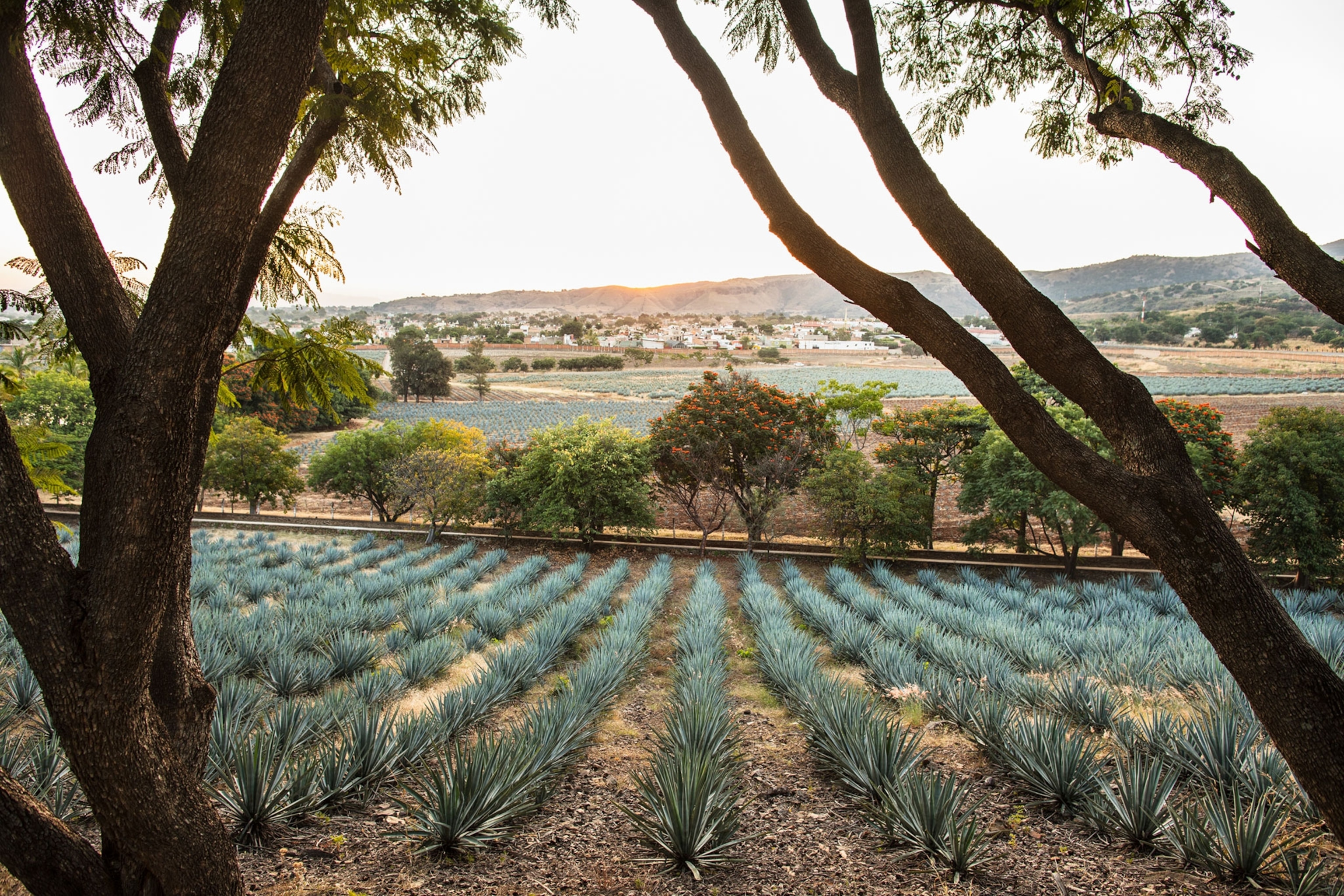
Michael S. Meldman of Discovery Land Co., whose 18 resorts feature vacation homes ranging from $1 million to $50 million, developed the Cabo property where Gerber and Clooney owned their houses. He had friends in Mexico who had friends who owned tequila distilleries. Gerber soon flew to Jalisco, telling one master distiller how he and his Oscar-winning buddy wanted to make their own private drinking tequila. The master distiller, whose name Gerber won’t divulge, began sending samples. There was no deadline, of course, so they kept tasting, until after “about two years and 700 samples, we got this bottle,” Gerber says. “George and I tasted it. We looked at each other and we were like, ‘Oh, my, it is literally perfect.’”
It became their house tequila. When the number of bottles they received as samples grew to 1,000 a year, the distiller called. “He said, ‘Either you’re selling it or you’re drinking way too much,’” Gerber remembers. “‘Either way, we can’t keep calling it samples and sending it to you. You need to get licensed.’”
They were licensed in 2013. Southern Wine & Spirits became their distributor. As for the price, Gerber says it wasn’t “about the money. We just want everyone drinking it. So we put a number on it and they said, ‘That’s too cheap. You need to charge more.’” (The price was kept low, between $45 to $55 a bottle.)
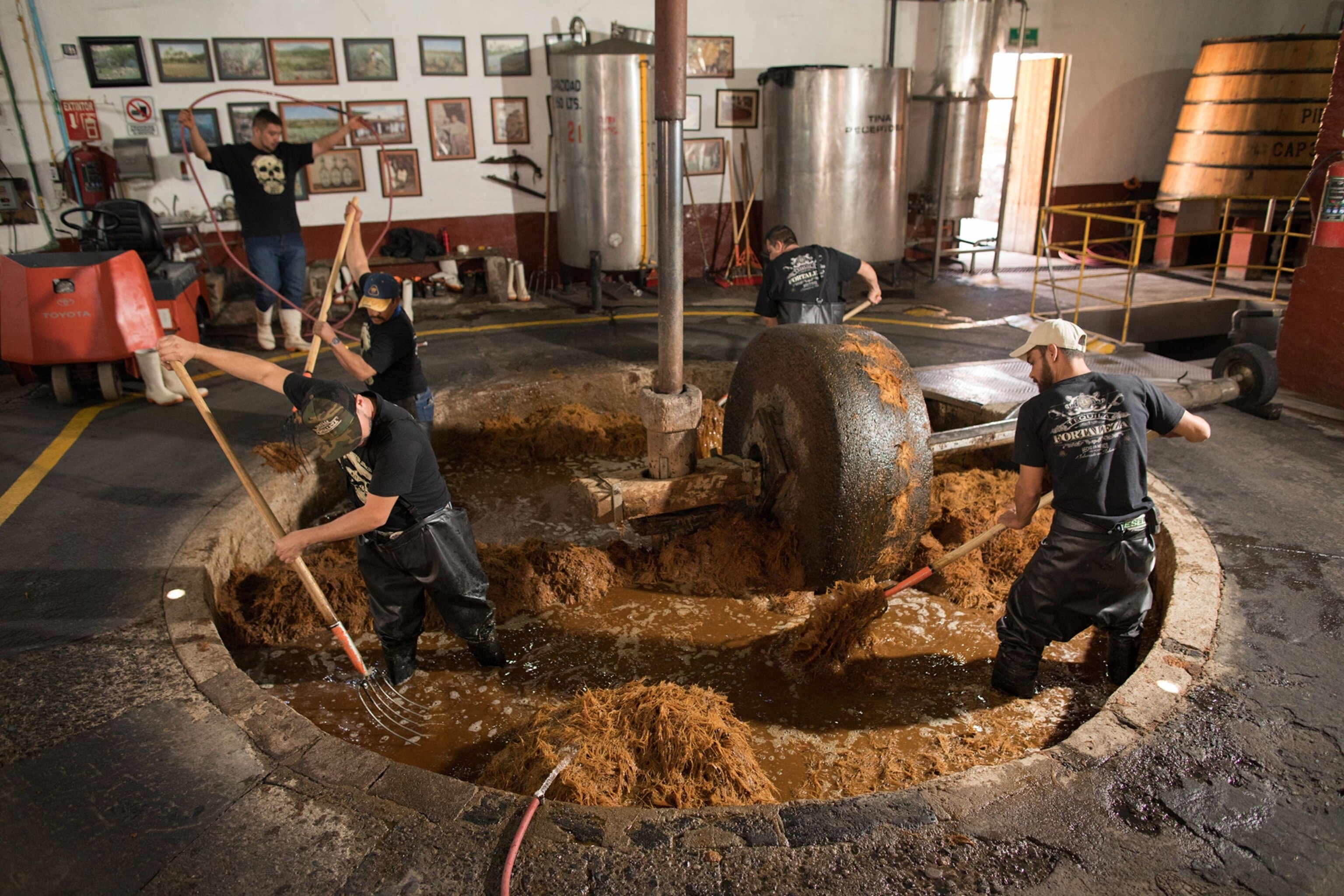
Next, like Patrón, came the marketing. Clooney had proven his advertising power though the coffee company Nespresso, which, with him as global brand ambassador, saw sales accelerate by at least 30 percent. What Clooney did for Casamigos catapulted the brand into the stratosphere. First came the infamous television “bed ads,” one showing Gerber walking in on his wife in bed with Clooney, a bottle of Casamigos to blame at their bedside. Print ads featured the two on a buddy trip in Jalisco, touring fields of agave by motorcycle. And advertising that money can’t buy: photographs that went global of 100 cases of Casamigos being loaded onto Casamigos’s private jet being flown to Clooney’s wedding to Amal Alamuddin in 2014.
Casamigos was quickly sold in 20 countries, becoming part of what AdAge would call the new tequila “gold rush.” With its profits growing 54 percent the past two years, Casamigos is the fastest-growing ultra-premium tequila in the U.S., says Gerber. Not only in orders, but more importantly “depletions” reorders. “We own a proprietary recipe for Casamigos Tequila that can’t be duplicated,” Gerber says.
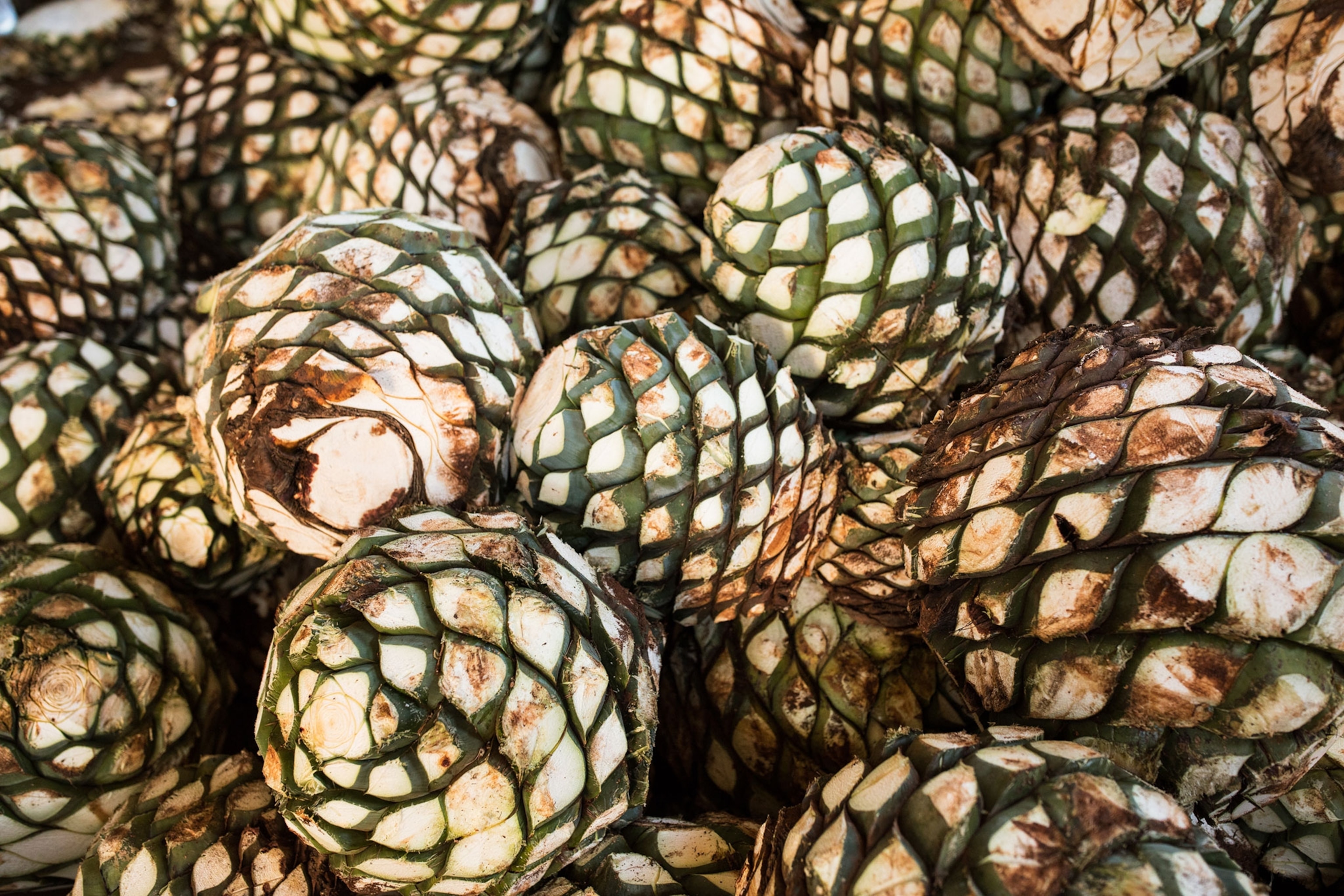
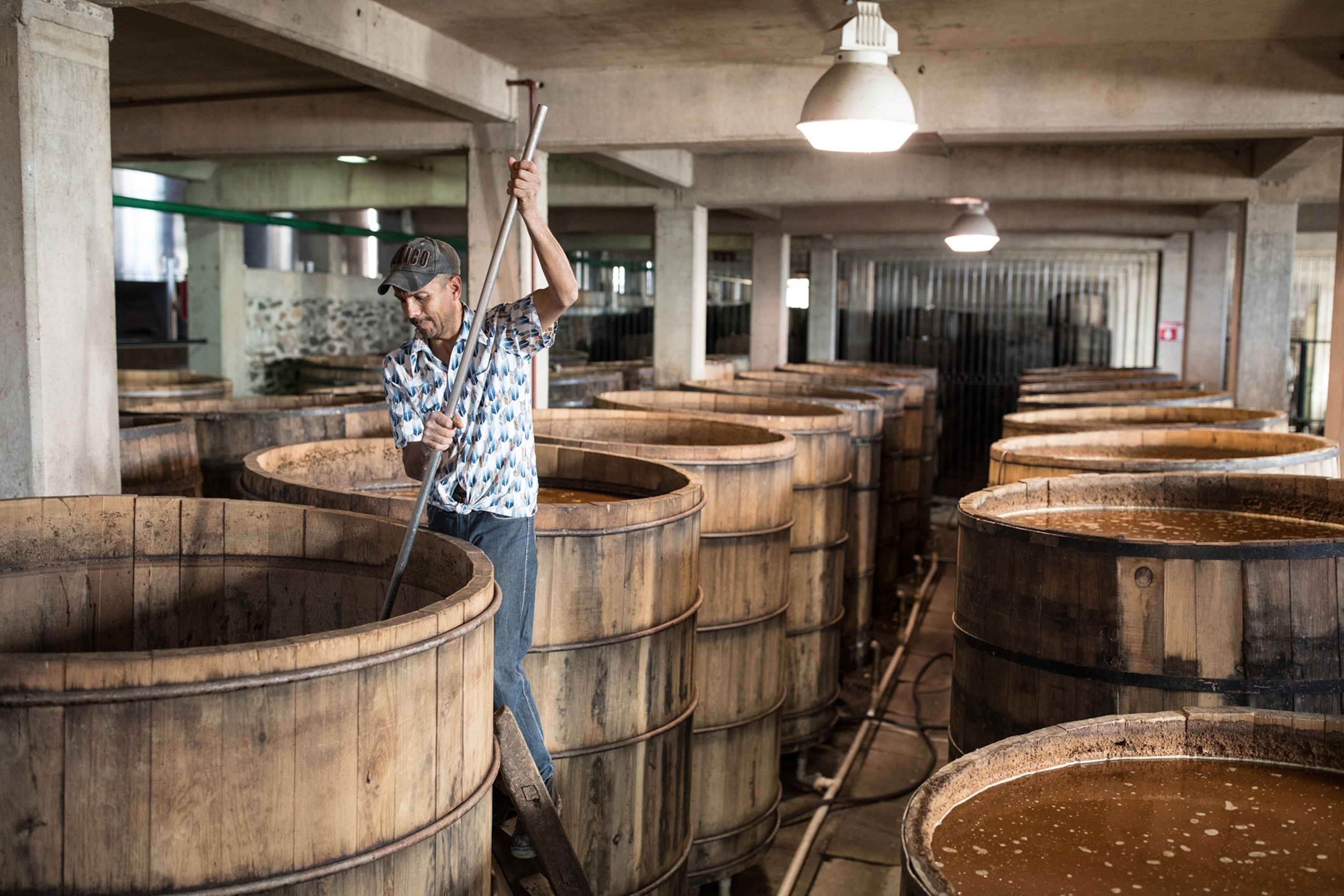
Then, just as the rum giant Bacardi bought Cazadores, and the champagne colossus Moët Hennessy bought Volcan de mi Tierra and the American wine and spirits king Brown-Forman bought Herradura, and other liquor conglomerates entered the tequila market by buying local concerns, a giant came calling. Last June, Diageo, the world’s biggest producer of spirits out- side of China, whose brands include Don Julio and Johnnie Walker, contacted Casamigos CEO Lee Einsidler. “We weren’t interested in selling,” says Gerber. But when Diageo offered up to $1 billion, $700 million up front and $300 million based on performance, they accepted. For Gerber, the price represents a bet: “Some of the larger companies, they are only going to buy something that they think has potential in the future to grow even more,” he says. Terms of the sale included Gerber, Clooney and Meldman continuing to run the company. In April, they expanded, introducing Casamigos Mezcal.
In the center of Guadalajara, I visit the most expensive con- tract brand: Clase Azul, whose ornate ceramic bottles—created and hand-painted by native Mazahua indigenous artisans in Clase Azul’s facility in Santa María Canchesdá—sell for as much as $30,000 apiece, with its lowest-priced bottle going for $80. And its story is, as board member Jorge Berrueta tells me, of a brand born “backwards.”

- National Geographic Expeditions
In 1997, Clase Azul’s founder, Arturo Lomeli, began producing what he described to CNN as a “terrible” tequila, its bottles festooned with a sombrero and a mustache. He returned to college for his master’s degree in the field that is the key to so many tequila fortunes—marketing—and in 2006 joined forces with tequila wizard Jorge Berrueta, a Stanford University-educated chemical engineer. “I was president of the Tequila Chamber from 1991 to 1992,” Berrueta says. “In 1994, with Cuervo and others, we founded the C.R.T., Tequila’s regulatory council. In 1995, I was Sauza’s general director. After that, I went into consulting and finally started with the company 12 years ago.”
He and Lomeli created the bottle first, eventually encrusted in pure platinum, silver and gold. Originally envisioned as a momentary novelty, an outrageously expensive $1,200 black-and-platinum bottle of tequila with a 24-karat gold label in Los Cabos was launched. Into these fancy flagons, they pour a tequila that their representative says is “independently produced” at Productos Finos de Agave SA, which produces 27 other brands. Berreuta says Clase Azul is created by a supreme master distiller: himself.
We enter the tasting room, the table strewn with thousands of dollars worth of Clase Azul. The tequila is lovely, at least to this gringo’s tongue, and the bottles are undoubtedly beautiful.
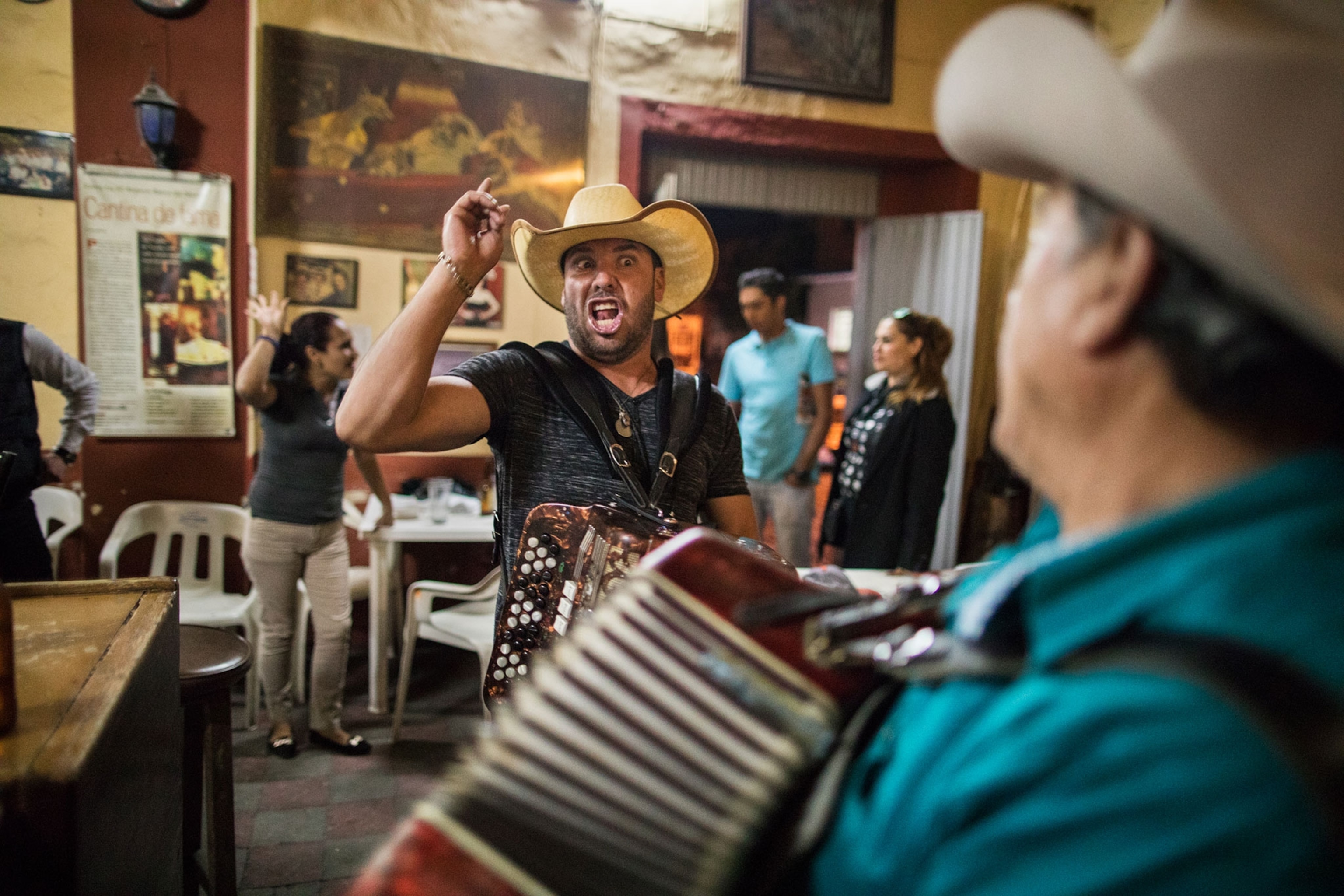
The next dawn, I drive out of Tequila. As the sun rises over the giant mist-enshrouded stone tequila bottle statue that welcomes and bids farewell to pilgrims to the fountainhead, I try to recall the differences between the countless tequilas I’d tasted. Dizzy from the litany of various brands’ bouquets, aging effects and flavor profiles, I remember most the one attribute that all tequilas share: They’re selling.
ON THE TEQUILA TRAIL
Fly into Guadalajara, and drive 32 miles to Tequila town, or 58 miles from Guadalajara to the Highlands town of Anonolico Los Altos.
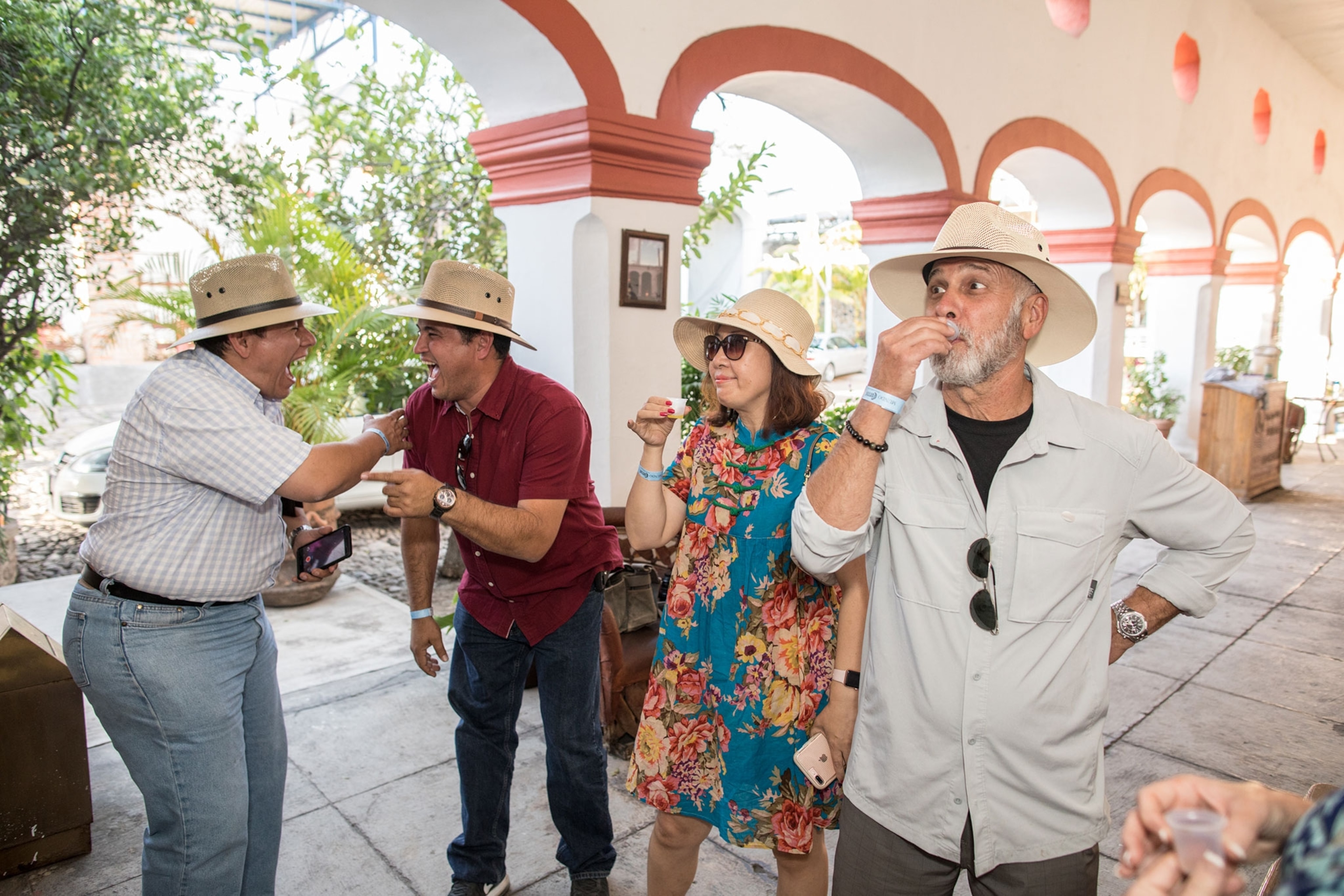
Where to Stay: In the epicenter of Cuervo World, the tequila company’s hotel/restaurant/distillery district, is Tequila town’s Hotel Solar de las Animas (rooms from $130). Opened by Cuervo in 2015, the 93-room Relais & Chateaux property is close to the distillery and in the middle of everything.
Where to Watch Tequila Being Born: Most of the 17 distilleries in Tequila town are available for tours, including the two giants, Cuervo and Sauza. The smaller brands are also available for tours, many by appointment.
In the Highlands, La Altena distillery, which produces, among others, Tequila Ocho is open daily. In the nearby town of Arandas, have lunch at Carnitas Jaime’s, which has authentic fare and an informal mini-museum to the great tequileros.
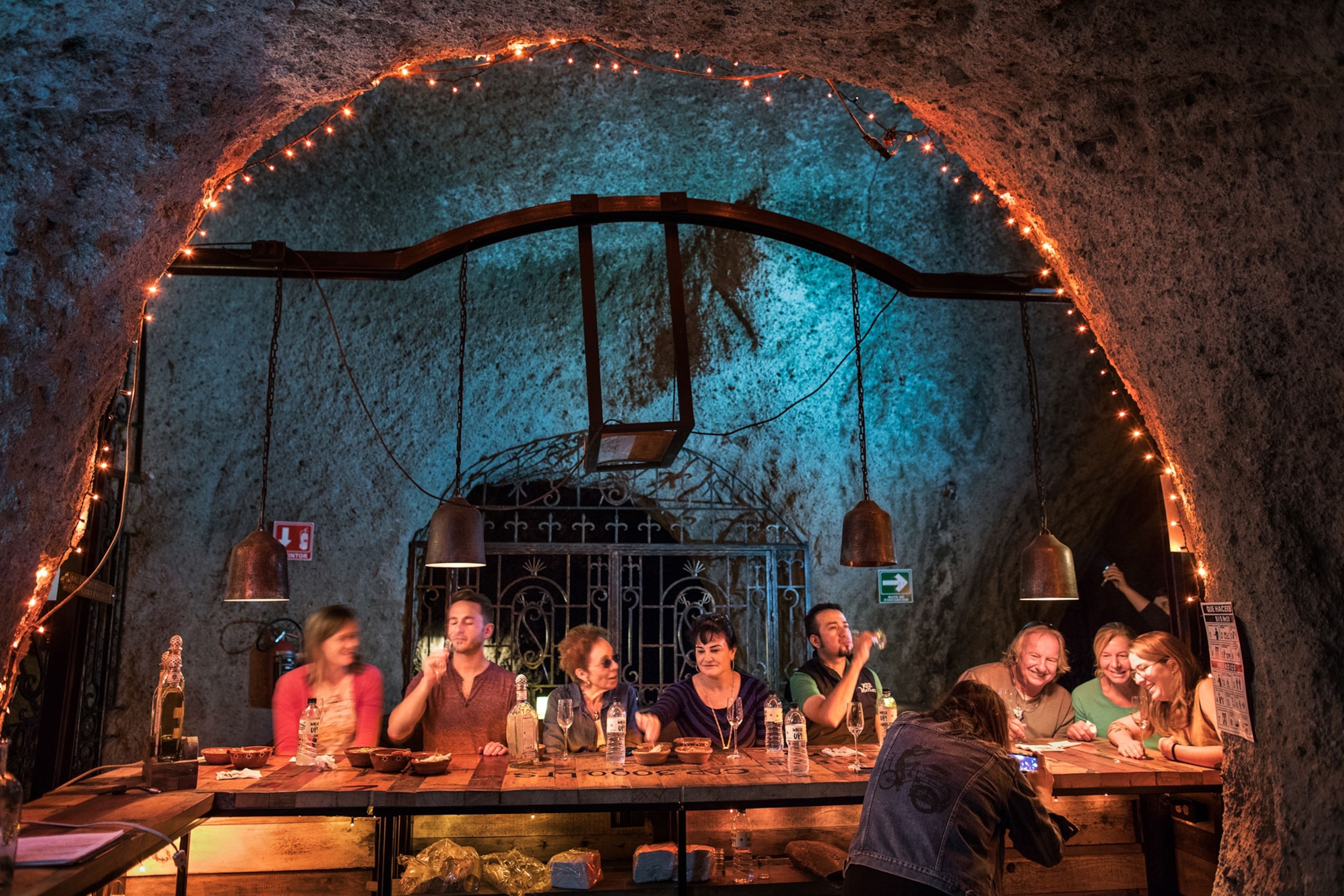
Where to Drink: Two bars in Tequila town give visitors the two ends of the tequila spectrum: first, the traditional, La Capilla, an old-school cantina offering a few bottles, with music and authentic atmosphere; second, the present and future, La Cata, which calls itself a “tequila tasting room” and has a mind- bending list of, well, almost all of tequila’s thousands of brands: 52 blancos, 53 reposados, 43 anejos, 15 extra anejos, all served in hand-blown tequila snifters by erudite experts.
